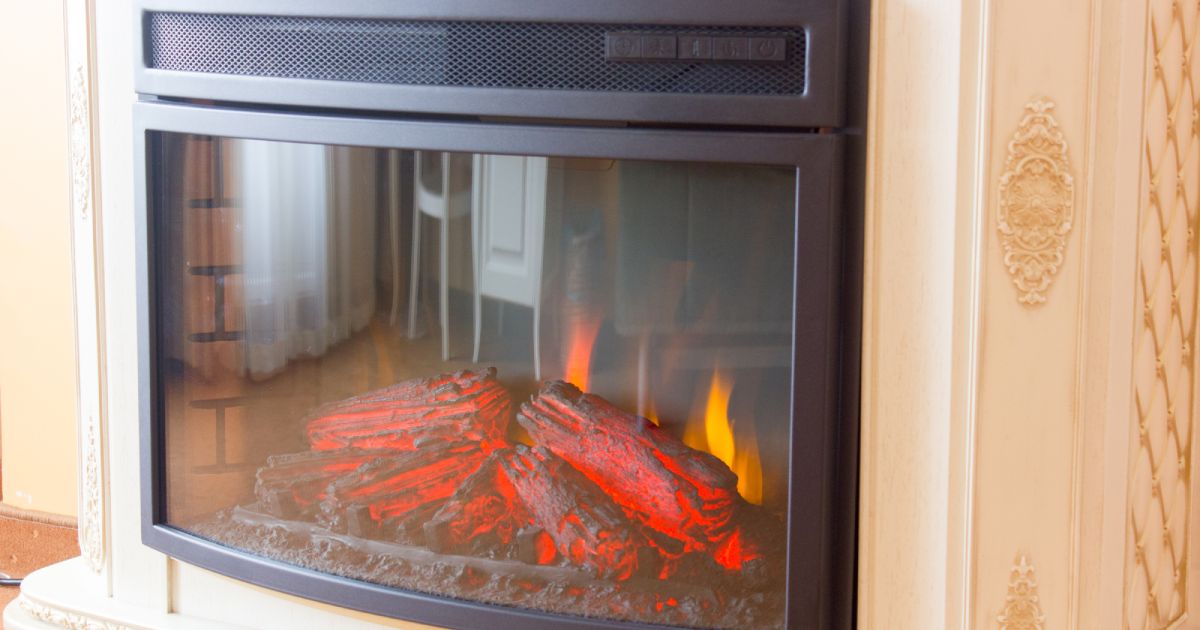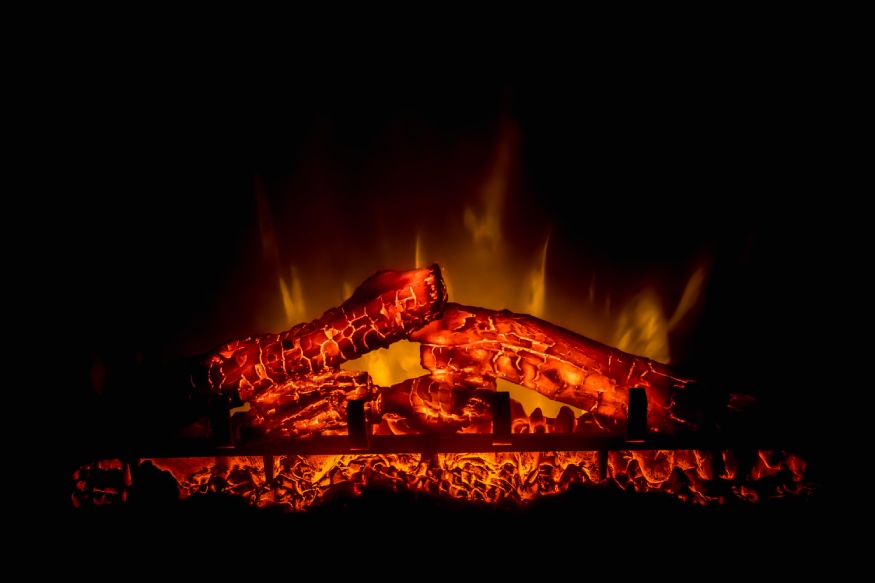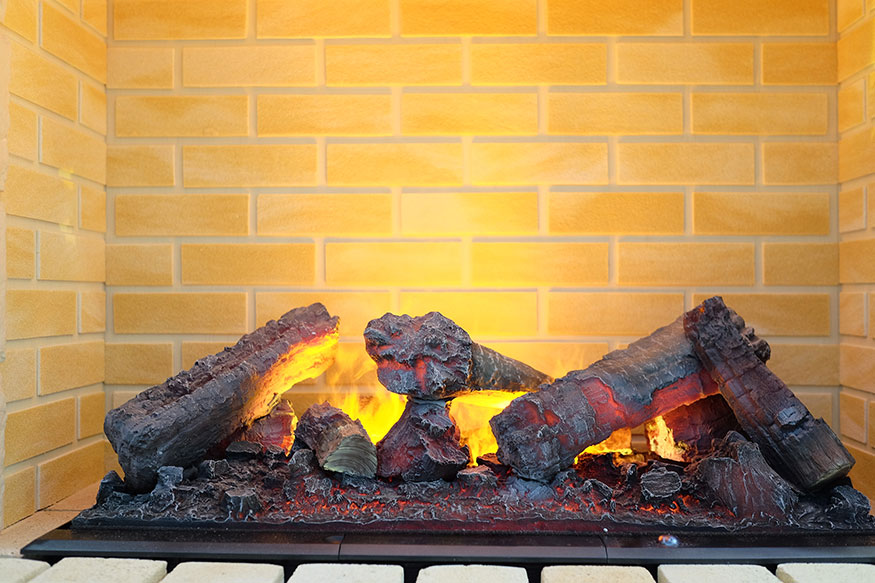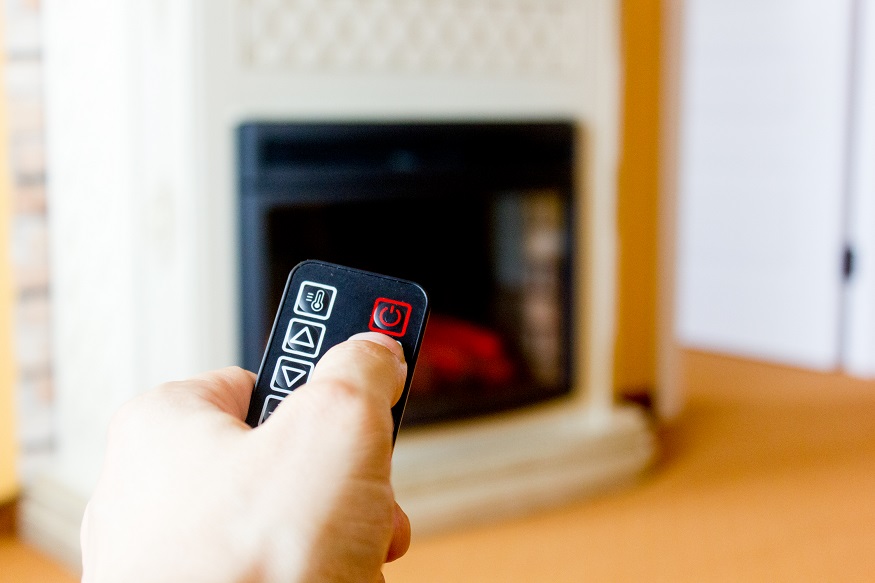Electric fireplaces are popular traditional wood-burning fireplace alternatives. However, as convenient as they are, many homeowners worry about the electricity consumption of running these appliances.
This article dives into the details surrounding electric fireplace energy usage, so keep reading to learn more!

Do Electric Fireplaces Use a Lot Of Electricity?
No, electric fireplaces do not use a lot of electricity. As a matter of fact, its energy consumption is roughly the same as a space heater. This is because electric fireplaces use a 1500 watt heating element that can put the same 4,000-5,000 BTU range of a space heater.
Electric Fireplace Efficiency

Unlike other types of fireplaces — wood burning, gas, and pellet-burning fireplaces — electric fireplaces can convert nearly 100% of energy into heat. Wood burning fireplace also loses up to 90% of the fire’s heat through the chimney.
Note: Electric fireplaces do not need venting because no combustion is involved in creating heat.
In terms of energy efficiency, some models are more efficient than others. The Ameriwood Home Brooklyn Electric Fireplace, XtremepowerUS Allure Linear Wall Mount Electric Fireplace, and Magik Flame’s Trinity model are popular electric fireplace choices because of their energy efficiency and realistic flames.
Magik Flame’s Trinity model can heat up to 1,000 square foot rooms, while the other two options are best suited to smaller areas, as they can efficiently heat up to 400 square feet.
Each option offers a slightly different heating output capacity (measured in British Thermal Units, BTUs). The output capacity you’ll need for your home is dependent on the size of the space you need to heat, which affects your fireplace’s ability to heat the area efficiently.
How much does it cost to run an electric fireplace?
If you use the fireplace to heat a living space, the need for alternative heat sources is diminished. Depending on what type of heating system you rely on, the switch to an electric fireplace could reduce how often you run your furnace or heat pump.
The cost of running an electric fireplace in your home hinges on three primary factors:
- Operating time
- Power consumption (specific to the unit)
- Local cost of electricity
Most electric fireplaces use 120 volts to power the heater, drawing about 1,500 watts at 12.5 amps from a standard household outlet.
We can use these general specifications to create a general idea of average operating costs. Based on average electricity costs in the United States, running an electric fireplace costs about 15 cents per hour.
Note: The amount of operating time is a significant factor in determining how much electric fireplaces will raise your bill. If an electric fireplace is your primary heat source in the room, you’ll probably run the fireplace for longer than one hour.
If you were to run the unit for six hours per day, the electric fireplace will raise your electricity bill by $1.08 per day or $32.87 per month. For 12 hours of run time, it would cost you $2.16 per day or $65.64 per month.
| Appliance | Cost per hour |
|---|---|
| Washing machine | $0.38-$1.02 |
| Dishwasher | $0.17-$0.37 |
| Television | $0.01-$0.03 |
| Electric fireplace | $0.15 |
Consider the cost of running your electric fireplace compared to a few other daily operations in your home. To wash a single load of laundry, you’ll pay between $0.38 and $1.02 per hour. Or, one dishwasher cycle costs anywhere from $0.17 to $0.37 per hour. When you watch TV, it costs you between $0.01 and $0.03 per hour.
People often can’t decide between an electric fireplace or a space heater for their home. Check out our space heater energy calculator to compare their operating costs.
Related article: How Many Amps Does a Space Heater Draw?
Are Electric Fireplaces Cheaper To Run Than Gas Fireplaces?

According to most cost estimates, electric fireplaces are considerably cheaper to run than gas fireplaces. Of course, estimates vary based on the particular scenario, so there isn’t a catch-all answer.
To provide a better idea of the cost difference, let’s look at the running costs for a gas fireplace.
If we implement similar estimations to the above example, a gas fireplace costs around $0.70 per hour to operate. Considering that an electric fireplace costs approximately $0.15 per hour of operation, that’s a substantial difference.
With that said, the cheaper option for your home hinges on your particular scenario. For example, the efficiency of your gas fireplace plays a critical role in determining the average hourly costs for operation.
Regardless, electric fireplaces are an inexpensive option for supplementing your home’s heating.
Related Article: How to convert a wood fireplace to electric
How To Reduce The Cost of Running an Electric Fireplace

Electric fireplaces are an excellent addition to your home, adding a comforting, warm, and welcoming ambiance. However, if you rely on your electric fireplace as a primary heat source in a particular space, it can cause your electricity bill to snowball.
You can implement various methods to cut back on operating costs for your electric fireplace, some more involved than others.
Tips on how to make your electric fireplace cheaper to run
Thankfully, there are several ways to reduce the overall cost of running your electric fireplace. Here are a few tips for making your electric fireplace cheaper to run:
- Lower the temperature: A lower temperature setting generally costs much less (up to 50% less) than the higher temperature setting. If the space is comfortable, consider lowering the heat setting.
- Move closer: This might seem obvious, but if you’re 10-feet away from the electric fireplace, you won’t absorb as much heat compared to being 3-feet away.
- Close doors: Close all the doors to stop the heat from escaping to other areas of your home. This tip works well when you only want to heat the space you’re currently occupying.
- Operate a ceiling fan: Ceiling fans don’t use much electricity and can be extremely helpful in moving warm air throughout the space. The fan helps make the fireplace more effective by circulating air around the room, translating to better heating efficiency.
- Adjust your thermostat: Many modern electric fireplaces feature a built-in thermostat, which is ideal for controlling the room temperature and reducing electricity waste. Some just have a low, medium, and high setting. Toggle it to a low setting to save money.
- Dim the lights or flame: If possible, turn off or dim the lights/flame of the fireplace. This can help cut back on energy usage, especially for older, less efficient fireplaces. Many modern fireplaces utilize LEDs, which are much more energy-efficient. However, they still use energy, so dimming the brightness or turning off the flame entirely will cut back on energy use.
- Cut back on usage: If you want to cut costs considerably, use the electric fireplace less. Stay warm with an extra layer of clothes, a warm blanket, or cuddling with your favorite pet or human.
- Close window blinds and curtains: It would probably surprise you how much heat loss you can prevent by simply keeping your blinds and curtains closed.
- Seal drafts: Great insulation throughout your home helps trap warm air in the winter and cool air in the summer. You can save up to 15% or more on heating and cooling costs by sealing drafts in doors and windows and replacing faulty insulation.
- Upgrade to an efficient model: Consider upgrading to a more efficient unit if you have an older electric fireplace. Modern units are considerably more energy-efficient than their predecessors. Additionally, new electric fireplaces usually have more features for optimal control. Elevated levels of management can translate to reduced energy waste and lower energy bills.
- Consider switching electricity providers: Utility providers often offer considerable discounts to attract new customers. You might be able to find a better deal on your electricity bills. The best part? Lower electricity costs don’t only affect your electric fireplace; they benefit the cost of operating appliances, lights, etc., throughout the entire house.
Is An Electric Fireplace A Good Choice?
Ultimately, the final decision about the best heating option for your home falls to you. With that said, electric fireplaces are a fantastic choice. They are a more convenient, worry-free option compared to traditional fireplaces.
Electric fireplaces are very safe and don’t use excessive energy. But the electricity bill can add up if you use the electric fireplace as your primary heat source.
However, an electric fireplace may be the perfect option for supplemental heating. You can enjoy the warmth and cozy appearance of a crackling fireplace, all without the work a wood-burning fireplace requires.